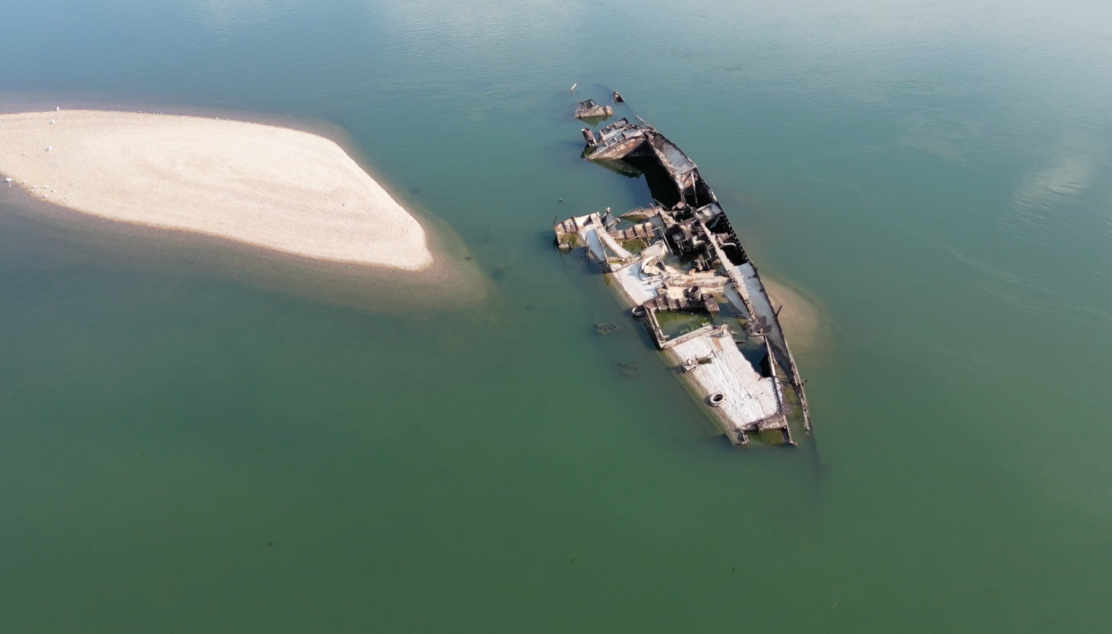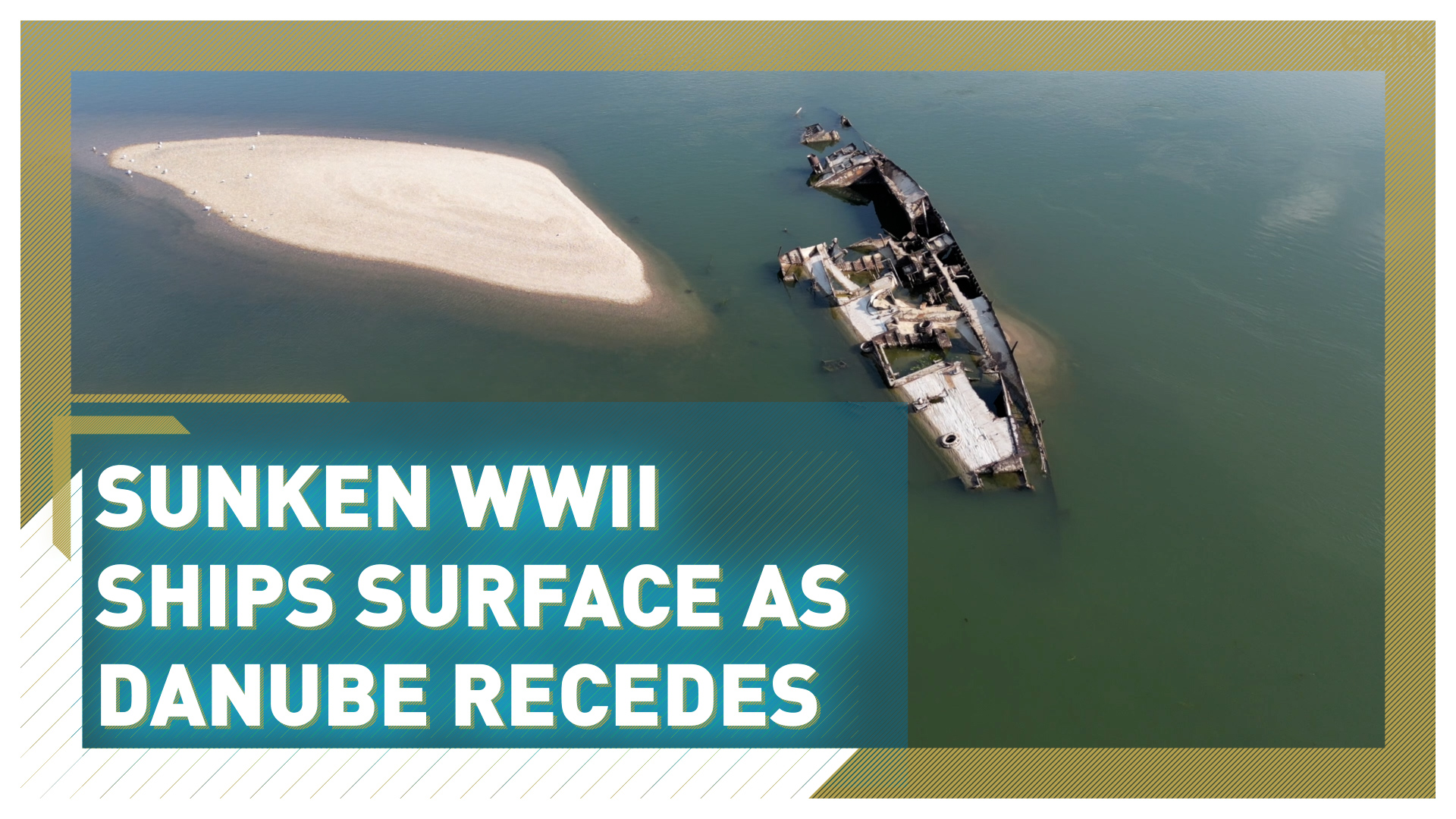
German WWll ships are now visible on the Danube by Prahovo. /CGTN
German WWll ships are now visible on the Danube by Prahovo. /CGTN
Shipwrecks that have been submerged for decades are now visible on the River Danube by the Serbian town of Prahovo. What once was a busy stretch of the river now sees little traffic as drought forces the water level to recede.
Prahovo has long been a significant port as it is the entry and exit point for all cargo and cruiser ships traveling between Romania and Serbia.
Several decades ago a major dam and a hydroelectric power plant, Djerdap 2, was built here, further enhancing the importance of the town – and also its dependence on the Danube.
And now, as in much of western Europe, the severe drought has had a direct effect on the people of Prahovo.
READ MORE
UK woman's search for missing Chinese father
Europe's cost-of-living crisis
Berlin's historic gas lamps under threat
Shipping lanes generally have become heavily restricted due to low river levels, but in Prahovo it is so extreme that German warships, sunk during World War II, have emerged.
For months, Europe's second largest river has struggled with the low levels. Grass now covers the river bank that was once under water.
While this is not the worst drought this section of the Danube in Serbia has seen, a gradual dropping of the water level means that a German Navy flotilla has resurfaced.
02:12

One of the ships that is now most visible is an armored river monitor. Parts of it stand some two to three meters above the river surface, between two sandbanks.
Local historian Velimir Trailovic has told how Germans fleeing the advancing Soviet forces sunk around 150 vessels here. He has spent over half of his life gathering historical data about what happened.
"On September 5, 1944, the last German ship sailed upstream from here," he told CGTN. "No other could pass after, as the Danube was blocked by the sunken ships. Witnesses told me that their masts, the chimneys, the bows could be seen sticking out of the water. After the war seven ships were pulled up from the bottom and 20 more other vessels."
Close to the sunken ships, 34-year-old Ivica Skodric has found work dwindle on his ship and instead he is forced to earn his living transporting tourists to the surfaced sandbanks on a small boat.
He said it is almost impossible to navigate the river now.
"Even entering, the river dam lock is so shallow that the ship barely maneuvers into the lock," Ivica told CGTN. "At this moment it's not so bad here, but further downstream in Romania and Bulgaria, it's a catastrophe – everything is stopped, no ship can pass."
The Danube rose about 70 centimeters in the previous few days, but the levels are still far lower than normal for this time of year. And while the ships destroyed by the Nazis are visible again above the waters, so are the effects of climate change.

